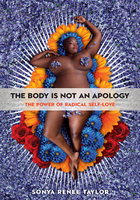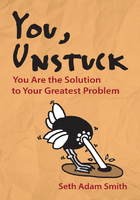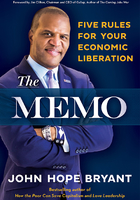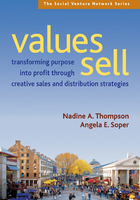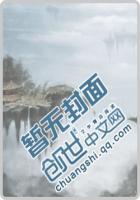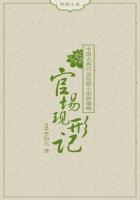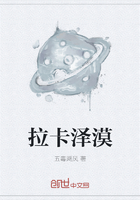The Artistic Flow of Business
On stage was a six-foot-square sheet of black paper with about eight buckets of paint on the floor in front. We were in Boston's Museum of Science, after dinner, at a business conference. The artist came out, chatted with the audience for a few minutes about what he was going to do, and then began to paint.
He used his hands as brushes, thrusting and cupping them into various buckets, then flinging, spattering, and smearing the paints onto the canvas. The colors, Day-Glo orange, lively chartreuse, electric blue, and the like, made a vivid contrast with the black sheet. Tony Bennett sang on the sound track. The artist spoke to the audience as he created, telling them that he needed their enthusiasm and involvement for inspiration. The room began to pulsate gently with foot tapping, some encouraging call-outs, and general enjoyment.
Within a couple of minutes you began to see that he was painting a portrait and by coloring the negative spaces, not the hair but the background arc around the hair. Around three songs or fifteen minutes later, he finished with a flourish of splatter for good measure, and there it was—a very alive-looking portrait of Tony Bennett in midsong.
He went on to do Albert Einstein. Then, during his third and final portrait, he played Jimi Hendrix music. By now the crowd was really with him, and the flinging and splashing paint matched the energy of the music and the room.
Soon, however, people began to notice that this one didn't look a lot like Jimi Hendrix. You could imagine his face, but more because you wanted the performance artist to succeed than because Hendrix's likeness was really emerging there on stage.
The artist paused, stepped back, and shook his head. He turned to us and said, “You know, sometimes they just don't turn out.” Then he looked back at the canvas for a long moment, cocked his head, walked up to the portrait, turned it 180 degrees around, and there it was—an electrifying, perfect likeness, with paint splatters of sweat flying off Hendrix in concert. We all loved it.
As a coda to the story, we're told the artist would sell the portraits for a four-figure amount. Sometimes they'd be for a charity fundraiser, sometimes they'd be prizes, and sometimes they'd just be for sale. A few years later we saw one behind the couch in an executive's office.
Why even have art at a business conference? To inspire people to think creatively, to see the many ways to look at the blank canvas of a business problem. And was his work art or entertainment? Was this visual art or performance art? You must be kidding, of course, if you think in each case it was one and not the other.
Most people find it difficult to operate with two perspectives simultaneously in mind, couplets like art and business, meaning and success, life and work, self and other, profit and beauty—the list is endless. The trick is to see these as dualities, irreducible and complementary points of view that we need to hold at the same time. When we embrace them this way, we can find contexts large enough to hold both halves. The mark of a first-rate intelligence, F. Scott Fitzgerald said, is the ability to hold two contradictory thoughts simultaneously and still function.[1] We think most everyone can do that.
When scientists look at the world that way, they see light is both wave and particle, time and space are not separate, and you cannot know position and momentum at the same time. When artists do that, they show comedy can raise tragedy to greater heights, three-dimensional depth can be portrayed on two-dimensional surfaces, and music can express formal elegance and emotional truth at the same time. When businesspeople do that, they prove quality and profit are not opposites, innovation and efficiency are compatible with one another, and producers and consumers can co-create.
Arts and economics can also blend, but generally they don't. Most of us feel both arts and economics are important to us as individuals, but we relegate economics more to our work and the arts more to our personal lives. This doesn't have to be. An artistic sensibility flows through business as much as an economic one does. But it gets much less attention, because the traditional business model doesn't know how to handle it. We believe a richer value proposition exists: artistic sensibility improves business performance.
Economic and Artistic Flows
Economic flow is rooted in science and technology and based on the straightforward notion that a business uses resources to fulfill desires. It presumes that people want their products and services to be better, faster, cheaper, and safer. It's a good model, but it ignores other desires. People also want their products and services to bring meaning, beauty, enjoyment, and excitement to their lives. These desires are addressed by the artistic flow.
Both economic and artistic flows have a direction and an inevitability to them, like water flowing downhill: things go in one direction, from raw materials to satisfied customers. The two flows have the same elements of inputs transformed by processes into outputs. The two flows are different because of how they define these terms.
Inputs. In the economic flow, the resources are called raw materials or factors of production—specifically land, labor, and capital. The artistic flow of a business, on the other hand, starts with a different set of resources. Artists' resources go beyond tubes of paint and sequences of dance steps. The most important resources in the artistic flow are imagination, emotion, intelligence, and experience.
Processes. At the heart of both flows are the processes they use to transform inputs into outputs. In business, the total set of a business's processes is called its value chain. The steps in a value chain typically include research and development, manufacturing, distribution, sales, marketing, and overhead functions—or simply, create, produce, consume. These processes are also at work in the artistic flow: magic happens when artists create, performers perform, and audiences appreciate.
Outputs. Both business and art succeed when they know the people they address and the markets they serve. Businesses thrive when they meet customers' desires that were waiting to be discovered. Who imagined that instant messaging was going to be the “killer application” for online teenagers, the software that made the hardware worth having? Who would have thought people would want famous opera themes as ring tones on their cell phones? In the artistic flow, many desires are at work. Creators and consumers need beauty, excitement, enjoyment, and meaning. Not only do people look for these in art, they look for them in their lives. Economic needs are more basic, but not more important, than artistic needs.
British novelist C. P. Snow described two cultures—science and humanities—each aware of the other but speaking such different languages that one couldn't see value in what the other was doing.[2] So it seems with the economic world and the artistic world. The Art of Business has a more modest goal than Snow's, not to heal a breach but to show how business can benefit from an artistic perspective. The two models of economic flow and artistic flow don't require choosing one or the other. They are complementary, not contrary.
Why Now?
Five decades ago, the Industrial Age reached its high water mark and the Information Age began. Today the Information Age has matured, and three basic forces are now propelling us to pay attention to the artistic flow in business.
First, sound and images will become as important as numbers and text for the way business is conducted.
Second, sound and images carry emotionally richer communication than numbers and text.
And third, customers are embracing these changes faster than employees; they are happening faster outside than inside the organization.
Business is not prepared for these shifts. Creative artists and the consuming public have embraced digitalized sound and images, while managers and administrators have not. Business needs to pay attention now to the artistic flow, not because it's a nice thing to do, but because technological and market conditions are leading it there and will demand it.
Sound and Images. In today's economy, information comes in four forms: numbers, text, sound, and images. Information, of course, also comes in many other forms—such as intuition, emotions, smell, taste, and touch—but we do not yet have technologies to manipulate how we create and communicate them the way we do for numbers, text, sound, and images.
The first killer applications of the information economy were number-crunching programs for payroll and bookkeeping. Two decades later came word processing and, after that, the spreadsheet. Not until the 1990s did digital become the preferred format for sound (speech and music) and images (photos, graphics, and videos). Then presentation software like PowerPoint became another new killer app.
Numbers and text are still the workhorses for conveying information in science, technology, and business. Sound and images, by contrast, are more common in arts and entertainment, performance, and social expression. Now this is changing, due to faster, cheaper computers, data compression formats and algorithms, and broadband internet. More tools are in the toolkit. Mundane administrative tasks are enriched with more emotive and aesthetic information. Short and simple e-mails, for example, routinely link to visually rich websites. In the future, effective leadership and connections to customers will rely more on sound and images than just on plain words.
Emotionally Richer Communication. Routine phenomena of business administration are still handled overwhelmingly by numbers and text. A few specialized business activities, though, like product design, branding, advertising, and corporate identity, have long relied on sound and image.
As the vehicles we use for communicating evolve, so does the amount of emotional content we invest in those communications. The abundance of digital computing and communicating power is making emotionally and aesthetically rich information flows a more frequent part of daily business life. The richer the communication, the more emotion we share.
E-mail is a text-based killer app, for example, but see (or rather read) how it is morphing. E-mail is slowly becoming more emotionally and aesthetically rich, as it becomes easier to make pictures and sounds part of the message. Instant messaging, the next major generation of e-mail, is a much more human and emotional form of exchange than its predecessor.
Digital cameras are helping bring the same shift now that they've reached critical mass and replaced film cameras in most households. What's the first thing you do with a digital camera after you take a picture of someone? Look at it, show it to them, and talk about it.
In fact, Stan routinely carries a digital camera in his pocket that literally fits into an Altoids box. Its postage-size chips, inserted into a machine at our neighborhood Wal-greens, will burn a CD of 150 high-quality photos, for a few dollars, while we wait. In a reverse flow, it won't be long before feature movies will migrate off CDs and DVDs into the same tiny boxes that we carry in our pockets.
Cell phones, since they can communicate both information and emotion, are becoming the most important piece of technology for most people. Cell phones (sound) are absorbing e-mail functions like messaging and PDA functions like calendars (text), rather than the other way around. They are also taking pictures (images). The applications are migrating to the devices that hold the greatest “emotional bandwidth.”
Web logs are another increasingly popular case of rich self-expression. These “blogs” are web-based personal diaries, stream-of-consciousness jottings, and essaylike reflections, posted as soon as their authors write them. The best ones develop followings of readers and fans, while others have a more limited circulation. Today's blogs are mainly text-based, though emotionally rich; they'll increasingly broaden to sound and images. If Andy Warhol were still alive, he would say that, in the future, everybody will be famous for fifteen readers.
With each new generation of both hardware and software, human connections are richer and more immediate. Digital applications become more and more tuned to human connections, qualities, emotions, and even economics. We are moving from communicating economic information in cut and dried forms to communicating in ways that are by their nature more aesthetically and emotionally rich. The arts have as much (or more) to say about these things as does economics.
Faster Outside Than Inside. Changes in technology and communications are being adopted and exploited faster among consumers than in the workplace. Consumers have aesthetically richer information lives than employees, even when the same people switch roles between home and office.
If you see a manager using his laptop on an airplane, look at the screen. If he has numbers or text on it, he's probably working; if he has sound or images operating, he's probably relaxing. This isn't because the different forms are suited to different activities. It's because companies are slower adopters than are customers. Too many managers still think that PowerPoint slides are the frontier for visually rich corporate communication. They ought to look up from their laptops more often.
A hundred years ago, the high-tech way for business to communicate was by telegraph. The ability to communicate with dots and dashes transformed financial markets, transportation systems, and even warfare. The telegraph was such a successful technology that when the next new thing—the telephone—came along, Western Union took a pass. They couldn't imagine how it could be a significant improvement over what already existed. In hindsight, the ability to communicate voices and not just data over the wire transformed business once again. If Western Union had paid attention to artistic elements like meaning and emotion (telegrams, after all, told people about births, marriages, and deaths), they would have rethought what economic elements like faster and cheaper meant.
The business world today is showing a similar lag in embracing the new technologies. Music and entertainment industries are leading the way, but ironically the customers are doing the embracing, not the executives. The “suits” are resisting the change tooth and nail, litigating and intimidating their customers. Unfortunately for them, a business that alienates its customers isn't destined to survive. If they can't create new business models that embrace these technologies, how can they possibly embrace the same technologies to advance their administrative practices and managerial mindsets?
The work world will eventually catch up as today's teenagers and twentysomethings become tomorrow's managers. As they move into and up the work hierarchy, their habits will draw on software that relies ever more heavily on sound and images. Their communication will have greater richness and density of information, more juice and affect than a smiley face emoticon. It would be a pity to wait for another generation to fill the managerial ranks before this happens.
If you want further evidence of where change is happening, look for the verbs. Very successful applications (nouns) get used as verbs when they become part of our behavior. Want to improve the photo you just took, why not “photoshop it”? Search engines like Google went from being oddities to mainstream in five years. Now, if you want to know about someone, want the answer to a question, or want to research a topic, you just “google it.” Soon, if you want to know where something is, you'll “GPS it.” When popular applications shift from nouns to verbs, it's a sure sign that they've made it into our everyday actions; they've become the common and normal way to do things. They've migrated from everyday tools to everyday conduct.
These three changes taken together—the importance of sound and images, emotionally rich communications, and their adoption faster outside than inside corporations—will require businesses to change their ways of doing things. The artistic flow is now as important in business as the economic flow, and the real benefits come from weaving the two together. Companies that incorporate artistic elements into their economic flow will have a distinct competitive advantage over competitors holding on to today's version of the telegraph.
Déjà Vu All Over Again
We realize this whole notion of blending artistic and economic flow may seem unfamiliar. When new ideas come into the work world, it takes a while before they become conventional wisdom. Around two decades ago, for example, the business world paid no attention to the notion of culture. Then a few business writers and consultants picked up on the idea that, like countries, all companies have cultures that bear significantly on performance and the way things get done. Stan, for example, wrote a book on the subject (Managing Corporate Culture) and was featured in Fortune and BusinessWeek cover stories, the latter depicting corporate culture with Easter Island statues dressed in business suits.
Many companies said, “Yes, we've got a strong culture” and trumpeted the specifics. Others said they didn't know how to define it, but they were sure it existed in their companies. Consultants often helped them spell out what it was, what they wanted it to be, and the steps needed to close that gap. Today, the notion of “corporate culture” has survived the consultants and the gurus. It is a standard term in the business vocabulary, an accepted and honored concept, not a buzzword that disappeared as quickly as it sprang up.
We believe that artistic flow is another such concept. Corporate cultures are about the unwritten rules, the way things get done inside; artistic flow is about bringing aesthetic and emotional dimensions into all your work and business. This means bringing artistic flow into your products and services, to your customers and markets, to the ways you create, produce, and consume, and into the ways you manage and administer your organization. Not because it's pretty but because it's smart. Today, the business world says, “Huh, what does this have to do with us?” In the future the importance of artistic flow will simply be assumed. It will be a basic business term, another fundamental perspective.
Seeing in a New Way
The Art of Business is about seeing both the economic flow and the artistic flow in business. Enormous benefits result from applying and blending insights from two worlds—the aesthetic and emotional richness of the arts and the strategic and operational perspective of business. You can see textures where everybody else is seeing shapes. You can see colors where others see grays. You can see not just what is, but what could be.
In business strategy, the four cardinal elements are always you, your offer, your customers, and your competitors. If you've got a clear, differentiated view about how those four pieces fit together, you've got a strategy. But now, if you are managing both the economic flow and the artistic flow of your business, you will slightly change how you see these four elements.
See yourself as an artist. You don't need to be a Dilbertesque drone, trapped in a cubicle farm. Work can be ennobling. You can create things—new products or services, new experiences for people, or even a new atmosphere for getting things done. In any of these cases, you are creating something meaningful that wouldn't have existed if you hadn't been there. There's an aesthetic to that.
See your work as a work of art. Work doesn't need to be about what you do; make it about what you create. Punching a time clock isn't creating something, but making a customer happy is. Going to meetings might not be creative, but building a strong organization is. A work of art shows a human's touch. It's designed to be appreciated by someone else. It has some lasting value.
See your customers as an audience. If you see yourself as an artist and the work you do as art, then your audience will be a full partner in your enterprise. They will feed you as much as you feed them. You co-create. Nominally, you give them your offer, and they give you their money. If there are aesthetics in your strategy, if there is beauty in your offer, if there is elegance in your exchange—then they will also give you their emotional involvement. This is a far cry from the way most businesses deal with work, where two people are trying to get the better of each other before they walk away. Audiences and customers are part of the creative process. You can't create art without an audience; you can't get emotional commitment from customers without an aesthetic in your exchange.
See your competitors as teachers. Throughout their long careers, Picasso and Matisse saw each other as rivals rather than friends. But they followed each other's work intimately. Matisse once wrote to Picasso, “We must talk to each other as much as we can. When one of us dies, there will be some things the other will never be able to talk of with anyone else.” You can learn as much from your competitors as Picasso and Matisse did. You and your competitors are going after the same audience, but you are equipped with different strengths and have different perceptions of what the audience will respond to. Studying your competitors, you can learn what they are doing that you would never want to, and you can establish what you are able to do that they can't. By studying them, you can learn about yourself.
We can imagine some people pushing back and saying, “But I'm not an artist.” Wrong. Being an artist is like being a tennis player. You don't have to play every minute of the day, but you do it often enough to describe yourself as a tennis player. And if you are occasionally creative, if you deliver a beautiful serve or drop shot, if once in a while you do things that other people can appreciate, you are already a sometimes artist. That's enough to get started and to make it worthwhile.
What Life Could Be Like
“The purpose of art is to lay bare the questions which have been hidden by the answers,” wrote novelist James Baldwin. In business, we are too often so sure we know what customers want that we stop questioning ourselves. During the last several decades, most of us focused on satisfying our customers' needs for better, faster, and cheaper goods and services. Doing that, we lost sight of deeper needs and ways to make our lives more enjoyable, more beautiful, more balanced, more meaningful.
One of our favorite cartoons, clipped out and saved over twenty years ago, is captioned “Life Without Mozart.” It's a drawing by Mick Stevens of a desolate, despoiled landscape. An empty bottle, a flat tire, a few other pieces of trash, and nothing beautiful—or even interesting—as far as the eye can see. That's what life is like with the beauty and meaning stripped away. That's what life is like without artistic flow.
Now, instead of thinking what life without Mozart would be like, ask what life—or work, or even art—would be like if it had more beauty and meaning; if our reports had images and sound to accompany the text; if our office windows looked out on the water instead of the back of another office building; if our neighbors told us how much our products add to their lives. Life would be a lot more terrific, more fulfilling. Our work would be better, and we'd get better results out of it. This is what comes from understanding and managing the artistic flow of business.
注释:
[1]F. Scott Fitzgerald, The Crack-Up (New York: J. Laughlin, 1945).
[2]C. P. Snow, The Two Cultures (Cambridge, Eng.: Cambridge University Press, 1959).

